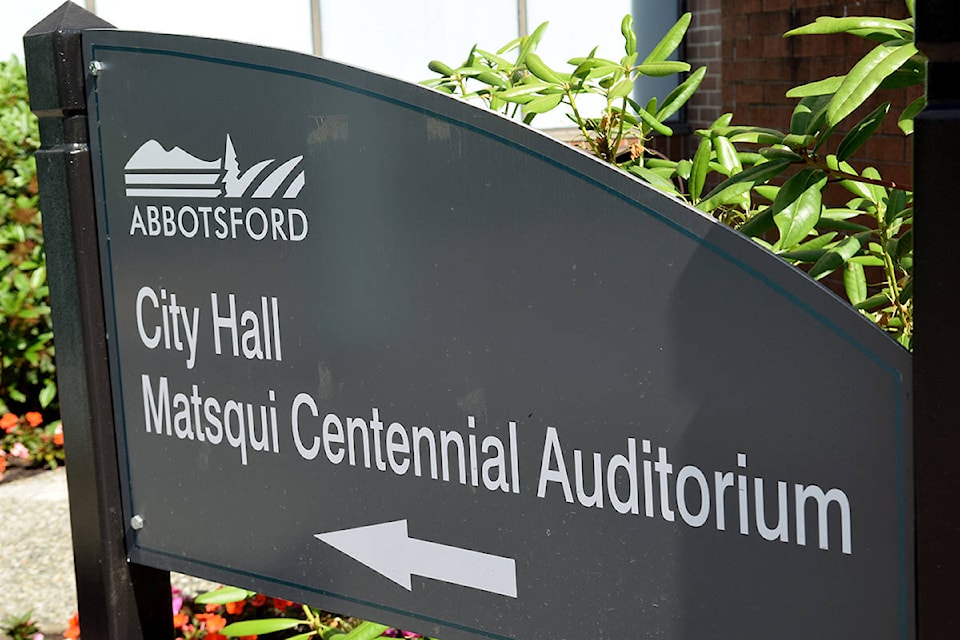When Abbotsford’s new council is sworn in next week, the faces on it will look a lot the same, but the work they have to do will be significantly different than four years ago.
Former mayor – and now soon-to-be councillor – Bruce Banman will join Mayor Henry Braun and seven returning incumbents. With much of the broad planning undertakings of the last four years wrapped up, council will soon dive into shaping policy that will have an immediate impact on Abbotsford and how it grows.
One of the first steps will be tweaking the city’s bylaws to allow the sale of recreational pot within Abbotsford’s borders.
Staff have been working on a slate of new rules to present to council. Such proposed rules are likely to be similar to those that govern where and how liquor stores operate. Although Mayor Henry Braun avoided weighing in on the issue before the election, saying a public hearing must still be held, a majority of councillors have already indicated that recreational pot stores shouldn’t be banned in Abbotsford.
RELATED: Marijuana stores should be legal, Abbotsford residents tell council
From weed, attention could soon turn to trees.
The city has been working on a new tree bylaw for years. The current bylaw has been criticized by Coun. Patricia Ross as one of the weakest set of tree-protection rules in the region.
In response to a questionnaire from The News during the election campaign, Braun and four councillors agreed with the statement that tougher rules are needed to discourage property owners from cutting down their own trees.
The urgency of the new plan was underscored earlier this year by a report that showed Abbotsford had lost more than seven per cent of its urban tree cover over the course of a decade.
But Braun also said in an interview that the city’s can’t outright prohibit the cutting of trees on private property. The city does, however, have certain ways to encourage tree retention, or discourage clear-cutting.
The current tree protection bylaw requires property owners to either replace any tree with a diameter greater than eight inches or pay the city an equivalent amount of money so it can plant trees on public property. Trees larger than one-foot wide must be replaced by three new trees.
RELATED: Abbotsford has lost more than 7% of its tree cover since 2005
Coun. Ross Siemens has promoted the idea of a comprehensive long-term tree strategy. That idea has been welcomed by Ross, but she has also suggested urgent action is needed.
The city is also working to update its affordable-housing strategy. The last such strategy was completed in 2011, before the Lower Mainland housing market went bonkers and the number of homeless men and women in Abbotsford spiked.
Staff once hoped to have that strategy completed by the end of 2017, but it has remained stuck in the first of four stages. During a pre-election interview, Braun attributed delays to it, the pot study and the tree management bylaw to how much work the city has “bitten off.”
Staff’s plans for the strategy will appear before council in early 2019, according to a city spokesperson. Research has already identified that the supply of housing for the one-quarter of residents making less than $40,000 a year is a critical need.
The city will likely consider incentives meant to spur the development of affordable housing types that the market is not currently supplying, including family-size apartment units and low-income rentals.
It also has the ability to impose stricter rules that could require builders to include a certain proportion of specific housing types in multi-family developments. But given past statements, many councillors may balk at such requirements under the notion that they could cause potential new multi-family buildings from ever actually being built.
Finally, a long-awaited drop-in centre for homeless men and women will soon become a reality. Such a centre – which could include washrooms and a place to store belongings – has been in the pipeline for years. Council looks likely to see a report on the impending plans sometime this month.
The location of such a facility may draw some scrutiny, but public resistance to buildings that serve the homeless has diminished since a plan to build a supportive housing project was denied in 2014 following criticism from the Abbotsford Downtown Business Association. After a shakeup at council following the 2014 election, a subsequent building got approval the next year and has since been built.
Council also will likely soon adopt new neighbourhood plans for the city centre and historic downtown. The new plans will guide how those key areas of Abbotsford develop, and will follow further public engagement activities later this month.
Finally, November is budget time at the city, with council seeing the city’s financial numbers and passing a new financial plan.
The lack of movement on council will likely make for few surprises, but there will be a chance for incoming councillor Bruce Banman to give an indication of how he will integrate himself – and how he may push for the quicker capital spending that he advocated for during the election.
@ty_olsen
tolsen@abbynews.com
Like us on Facebook and follow us on Twitter.
